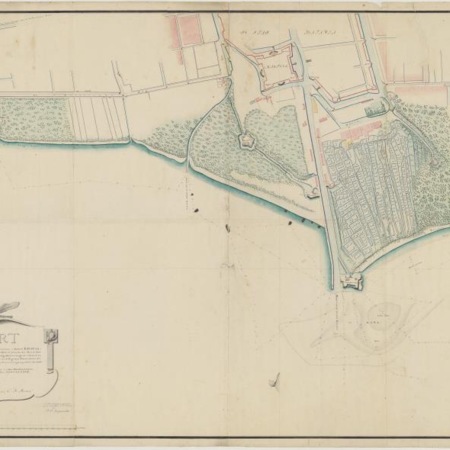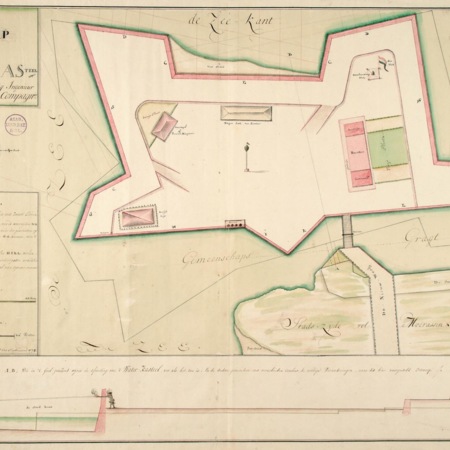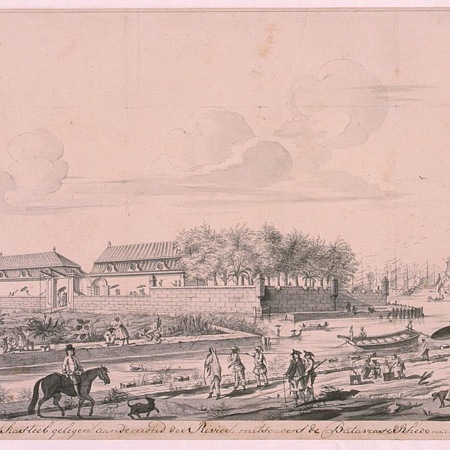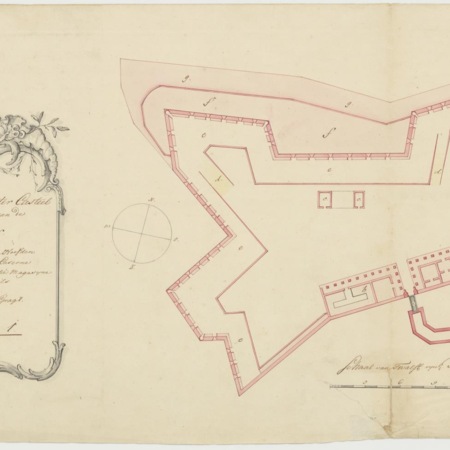In the 18th century the silting up of the coast before Batavia became a serious problem. Batavia Castle, one century after its construction, was now so far from the shore that it could no longer be used as a coastal battery. In 1742 governor General Gustaaf Willem van Imhoff (1743-1750) proposed the construction of a battery on a sandbank before the mouth of the Grote Rivier. The work started in 1745. The hulls of old ships were sunk into the mud as the foundation of the fort. It turned out that that this foundation was not strong enough. The original design was changed and in 1750 the construction of a smaller fort started. The problems with the foundation continued and in 1776 this fort was demolished. The decision was taken to build a smaller battery at the west end of the entrance of the Grote Rivier. In 1778 the engineer L. Lusom made a design of a new design of the land curtain of the Waterkasteel, but it wasn’t executed.
In 1819 the government decided to abandon the Waterkasteel, but this was never actually done. In 1840 the old fort was seen as an important part of the coastal defences of the city. In times of war the artillery was brought from the arsenal and a garrison of 30 soldiers and four gunners were stationed at the battery. In 1852 the Waterkasteel was classified as a 3rd class defence work, which means against a native enemy.
After the construction of the new coastal defences of Batavia in 1870 the old battery Waterkasteel was abandoned and one year later demolished. The main part of the site of the fort was dug away during the improvement of the Havenkanaal. (Pelabuhan Sunda Kelapa).



